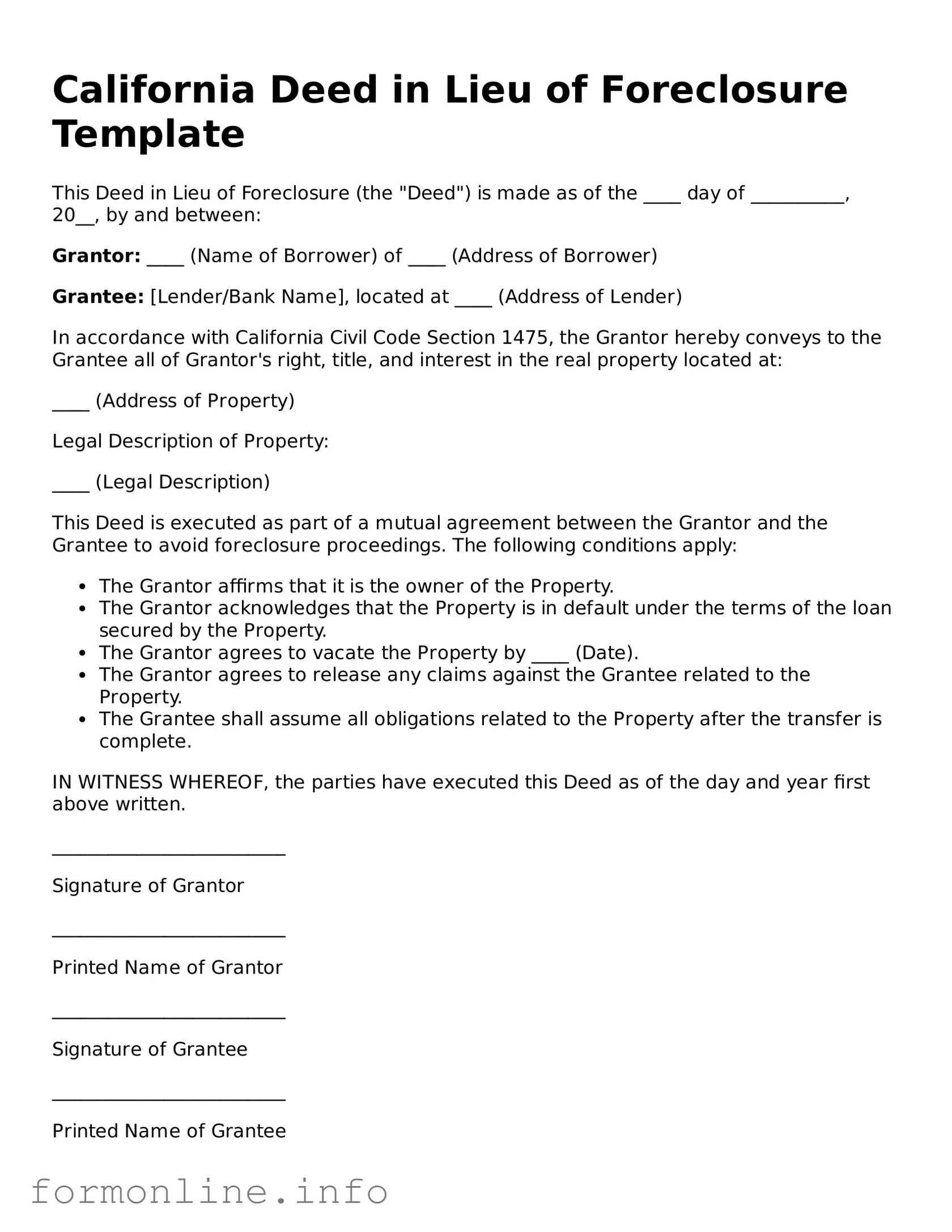California Deed in Lieu of Foreclosure Template
This Deed in Lieu of Foreclosure (the "Deed") is made as of the ____ day of __________, 20__, by and between:
Grantor: ____ (Name of Borrower) of ____ (Address of Borrower)
Grantee: [Lender/Bank Name], located at ____ (Address of Lender)
In accordance with California Civil Code Section 1475, the Grantor hereby conveys to the Grantee all of Grantor's right, title, and interest in the real property located at:
____ (Address of Property)
Legal Description of Property:
____ (Legal Description)
This Deed is executed as part of a mutual agreement between the Grantor and the Grantee to avoid foreclosure proceedings. The following conditions apply:
- The Grantor affirms that it is the owner of the Property.
- The Grantor acknowledges that the Property is in default under the terms of the loan secured by the Property.
- The Grantor agrees to vacate the Property by ____ (Date).
- The Grantor agrees to release any claims against the Grantee related to the Property.
- The Grantee shall assume all obligations related to the Property after the transfer is complete.
IN WITNESS WHEREOF, the parties have executed this Deed as of the day and year first above written.
_________________________
Signature of Grantor
_________________________
Printed Name of Grantor
_________________________
Signature of Grantee
_________________________
Printed Name of Grantee
This document is intended to be legally binding. Legal counsel should be consulted to ensure that all state-specific laws and requirements are properly addressed.
